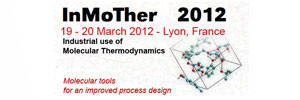
Abstract:
Advanced thermodynamic models need to be put to use in process simulators in order to provide the industry with the benefits they have been targeted at providing. Implementation of advanced models is a major issue for industrial users as reported by Hendriks et al. [1]. Each major process simulator proposes its proprietary solution for incorporating a user-defined thermodynamic model.
A more economical solution is to develop only once the interface between the thermodynamic model and any process simulator by using the CAPE-OPEN interface standards. Since most commercial process simulators are implementing the CAPE-OPEN interfaces, the CAPE-OPEN approach ensures a large and immediate usage of research results when these, implemented as thermodynamic models, are adhering to CAPE-OPEN. Already many thermodynamic software components have been brought to the CAPE-OPEN standards.
Transforming an existing thermodynamic model into a CAPE-OPEN compliant thermodynamic model requires wrapping the existing code using some programming language. In order to facilitate this task, which calls for some specific programming knowledge especially of Microsoft COM middleware, CO-LaN, the organization acting as the CAPE-OPEN standardization body, has released working examples of CAPE-OPEN thermodynamic software components: the source code in Microsoft Visual Basic 6 and in Microsoft C++ is made available together with their corresponding binaries. That way developers may build their solution from existing code, minimizing the learning curve needed.
Reference
[1] Hendriks E., Kontogeorgis G.M., Dohrn R., De Hemptinne J.-C., Economou I.G., Ljudmila Fele Zilnik, Vesovic V., Industrial & Engineering Chemistry Research, 2010, vol. 49, no22, pp. 11131-11141.
